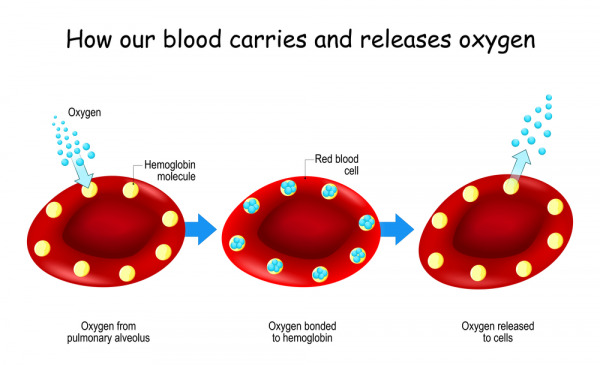A standard visit to the doctor usually includes a blood pressure reading, a temperature check, a breathing check by listening to your lungs, a heart beat check with the stethoscope and a quick look in your mouth, nose and throat. These quick standard procedures can help a doctor get a quick overview of your overall health condition. Lately, (possibly due to COVID) a pulse oximeter has been added to check for your current blood oxygen level.
Oxygen is necessary for life. We breathe in oxygen, which fills our lungs. Oxygen then goes from our lungs into the bloodstream. That bloodstream takes the oxygen to cells all over the body. Every cell in our body needs oxygen to create energy and that energy allows the cell to perform its intended function. Those cells use the oxygen from the blood and replace it with carbon dioxide. Your blood stream carries that carbon dioxide back to your lungs where you breathe it out and of course exchange it for fresh oxygen.

A pulse oximeter is a little finger or toe clamp device that can determine the oxygen saturation in your blood. A pulse oximeter measures how fast your heart is beating and how well you are breathing. This reading tells the percentage of your blood that is saturated with oxygen. Low levels of oxygen can indicate that your lungs or circulatory system are compromised.
Understanding Oxygen Numbers
- Ideal Oxygen Level: 96% to 99%
- Ideal Heart Rate: 50 to 90 beats/minute
NORMAL 96% or more Oxygen Saturation (SpO2) 40-100 Pulse Rate
ACCEPTABLE 95% Oxygen Saturation 101-109 Pulse Rate
SEE DOCTOR 93-94% Oxygen Saturation 110-130 Pulse Rate
EMERGENCY 92% or less Oxygen Saturation 131 or more Pulse Rate
Lung conditions and illness can affect your readings.
To track your oxygen saturation take a reading 3 times per day at the same time everyday and record your numbers. Keep track of both your oxygen and heart rate.
Symptoms Of Low Blood Oxygen
Hypoxemia is a below normal level of oxygen in your blood.
- Shortness of breath
- Headache
- Fast heartbeat
- Coughing
- Wheezing
- Confusion
- Fingernails, skin or lips a bluish color
Lifestyle Habits To Improve Oxygen Levels
- Get fresh air. Open windows or get outside.
- Stop smoking. Smoking inhibits lung function.
- Practice deep breathing exercises. Deep belly breaths can open airways and improve the amount of oxygen in your blood.
Want to improve oxygen uptake and cardiovascular function? Try Purium’s Heart Aid!
Blood Oxygen Levels: What Is Normal? #HealthSurgeon
Sources:
https://my.clevelandclinic.org/health/diagnostics/22447-blood-oxygen-level
https://www.ridgmountpractice.nhs.uk/pulse-oximeters
https://www.mayoclinic.org/symptoms/hypoxemia/basics/definition/sym-20050930
Find out where to buy Purium here, don't fall for these online business traps.
Did You Know?
- 1Looking to make extra money? We have Brand Partner openings on our team.
- 2Vitamins and Minerals in Purium are listed here
- 3You can Protect your gut bacteria from harmful glyphosate with this.
- 4Purium Health Products are organic and GMO free.
- 5The Biggest Purium Discount is available using our codes.









